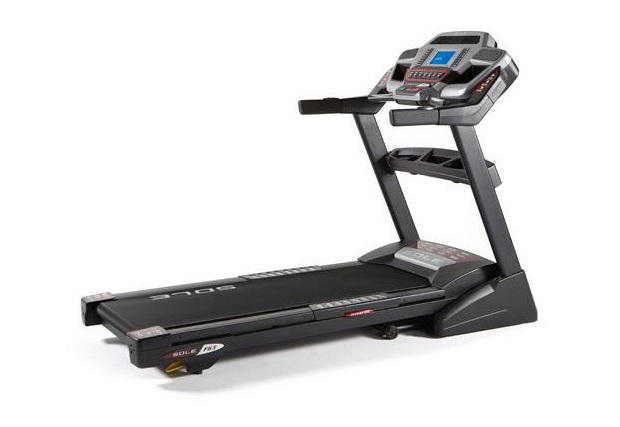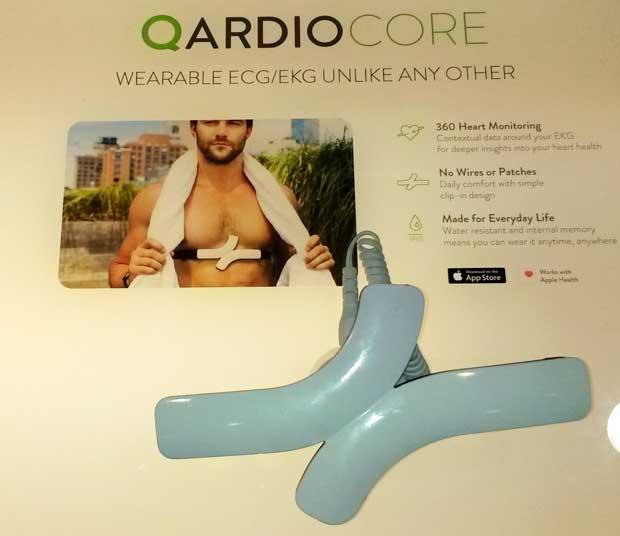The Treadmill Revolution?
Stationary training on Slowtwitch is almost all about the bike, not the run. It's not because you don't run on treadmills. We polled you less than 2 months ago, and 72 percent of you run routinely on a treadmill. More than 4 in 10 of you own one, and 1 in 10 are now in the market to buy one (about a third of you use the treadmill in your gym). You guys are treadmill runners.
You prefer the lonely life of the long distance treadmill runner while you're all about the party life of the social stationary cyclist. Is that it? If not, then we're not talking about the social ecosystem of stationary running because there isn't one to talk about.
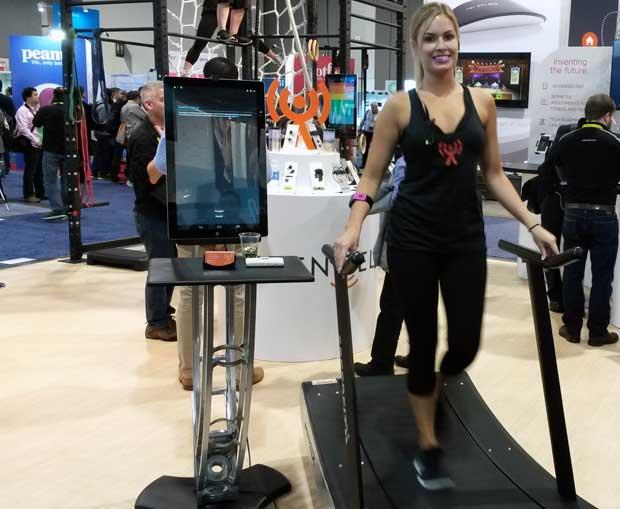
This is coverage article number-2 in my series on ecosystems, which is what animated my noggin as I walked the CES show last week. I am the de Tocqueville of the microelectronic world, the outsider looking in and writing my impressions. de Toqueville did write that History is a gallery of pictures in which there are few originals and many copies. Does the treadmill market lack a vibrant ecosystem for defensible market reasons, or because it's a market of few originals and many copies?
Here is cycling's stationary ecosystem: You have a Wahoo Kickr, or a Tacx NEO, or a Kinetic or a CycleOps trainer. You've got a subscription to Sufferfest, Zwift, TrainerRoad, VirtualTraining. You might need a Wahoo Speed and Cadence sensor or a power meter to drive your virtual training or racing software. You've got all of this hooked up via a computer or a smart phone and you're viewing these dynamic graphics on a big screen TV. Lots of interdependent stakeholders in this ecosystem.
What about running? The treadmill itself, the motor, belt, frame and so forth, is the meat of the product. Most treadmills have consoles and this is harsh but it seems to me they're obsolete before they're ever introduced. The graphics screen might not be much larger than the size of your car's navigation system and how far will graphical interfaces advance during the lifetime of your treadmill, with you not sharing in the advancements because you're tied to the console's graphics?

There is a small stationary running ecosystem. One stakeholder is
You can also run scenic courses, like the Arch 5k. Above is a screen grab from the video. Just, as regards the graphics, you're always alone. What you see with VirtualRunner in a race is what the leading Kenyan sees.
Just spitballing, but let's imagine the console gone from the front of the treadmill, replaced with a big TV screen and cycling-quality graphics. How might this work? What I hear repeatedly is that no treadmill company's lawyer will allow its treadmill to be made a slave. That's what I'm asking for, a slave that obeys the commands of a preprogrammed run. I can see their point. Remember the I Love Lucy Candy Factory episode? Candy rolls by on a conveyor belt? Instead of the treadmill as a slave to the program, the runner becomes the slave. If you have a pre-programmed intensity during a cycling workout, yes it gets harder, maybe too hard, but you can always just stop pedaling. Not so the motorized treadmill. Flying out the back, that's the liability these treadmill companies envision.
But there is a manual override. And the kill button. Wouldn't these mitigate the risk of injury? I don't know. This isn't my industry and the treadmill companies know their businesses. Still, what I'll write here is what I saw while walking the halls of the CES show.
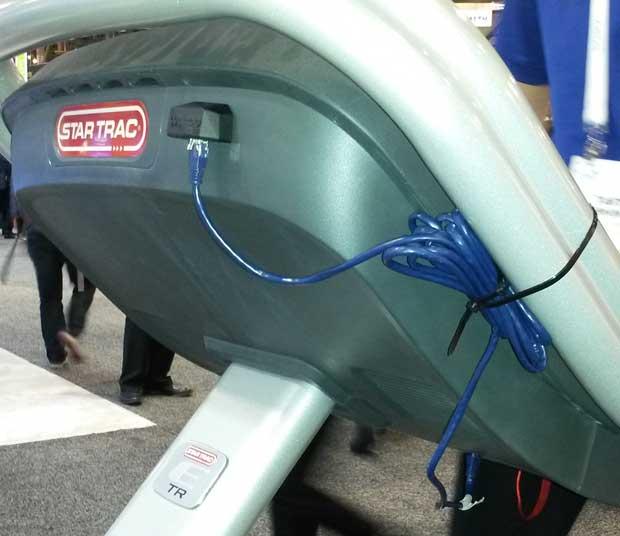
See this ethernet cable running in and around this treadmill? It's from Wahoo Fitness and it's called GymConnect. According to Wahoo Fitness, this will enable gym operators to easily create a wirelessly connected gym environment enabling gym goers to better track, manage and share their critical workout data for improved training and performance. It harvests data from the treadmill, to port into a training log. “The unintended consequence,” according to Wahoo's Mike Stashak, “was the massive interest in sending data the other way. We always knew we could do it but the interest in it far exceeded expectations.” What users want is a Borg Implant, to hijack and control the treadmill. This unit already has 2-way functionality. Wahoo is now a stakeholder in what I think might be just the frontier of a treadmill ecosystem.
The image below is of a non-motorized treadmill, probably not one that a serious runner would select. What's cool about this is the graphics. There is a “handlebar” on this treadmill. With a trigger. This works with any computer game. It takes the place of a computer game's console or joystick. If you walk on the treadmill you make forward progress in the game. If you don't walk, no forward progress (but you can still shoot stuff). Turn the handlebar left or right, pull the trigger, you can zap Martians with a laser, kill gang members in Chicago, whatever. This is a real product, but not a real fitness product. What I see is proof-of-concept for a future fitness product.
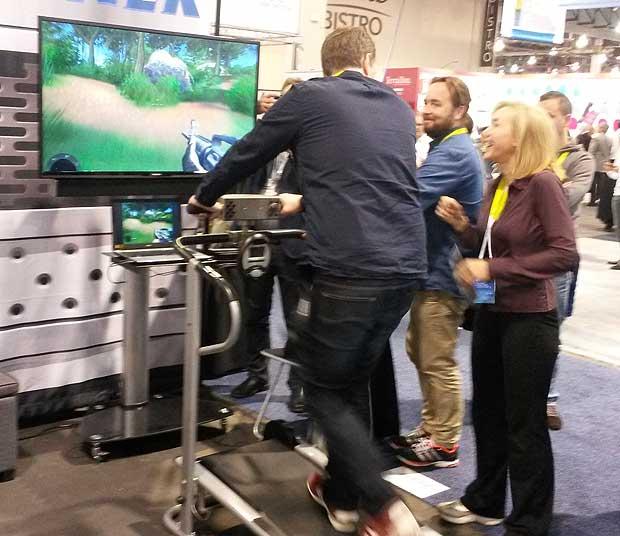
The image highest above is a non-motorized treadmill that is part of the Valencell display and in a future installment we'll talk about this interesting company. The treadmill has nothing to do with this company's product. It's just a way for a lady to walk outfitted with wearables powered by Valencell's high-tech, miniature, metrics-generating circuits. Just, note that this treadmill is unpowered, has no console, and if you did want to virtual race or train with it you won't fall prey to what happened to Lucy Ricardo. As long as the treadmill measures speed – or if the runner is wearing a pedometer or footpod or wearable exporting other metrics – he or she qualifies for a virtual session with first-rate graphics.
I've traded a number of emails with the folks from Woodway. They make really nice motorized units, and non-motorized treadmills like Woodway's Curve (below). I can't speak for them. I just get the sense this company and probably others like it are looking hard at breaking out of the current paradigm. (Woodway has in fact had the capacity to do much of what I'm writing about for years; it just hasn't yet been widely deployed or championed.)
I shot off an email to Jon Mayfield, founder of Zwift, and asked could he replace the cyclists with runners. Without going into detail or betraying confidences, Zwift is technically capable of activating on a running platform should it so choose. “The problem is that group running isn't really a thing people do, is it?” he asked me. “You mention you think a group run would be good; do you really believe that?”
“You're asking me whether I'd like to drop some motherblanker like a bad transmission, or blow a hole in my lung trying? Is this a trick question?”
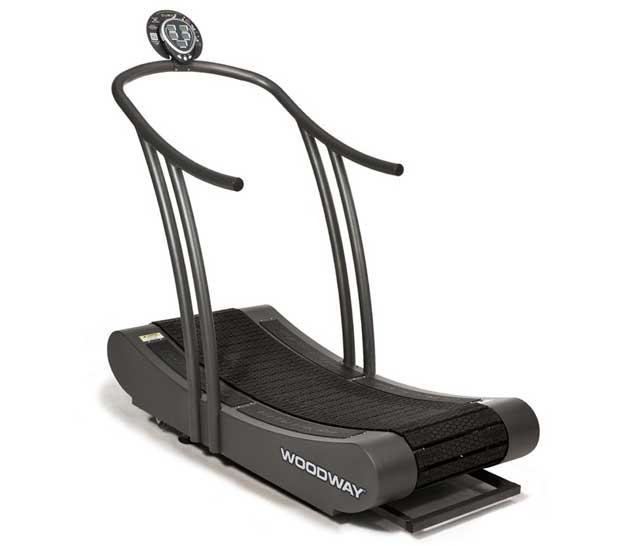
Jon then remembered he was talking to a 1-percenter. I and my ilk will seize any opportunity to compete. “What about the other 99 percent?” he asked.
I countered with this: What if “keeping up” in a Zwift session meant maintaining a metric other than speed? What if staying with the pack meant running in a particular heart rate band? Or a training zone? This means people across a city, across a family, any group of varying abilities, could engage in a virtual group run or walk, and falling behind simply means you're dogging it even by your own fitness standard. I could even imagine group workouts in a treadmill studio, where everyone is in the pack, on the big screen, and staying in the pack means progressing at your appropriate rate.
Zwift already supports voice-activated chat using Zwift Mobile Link on an iPhone. Hit Group Chat and the regular morning walk or jog group includes not just the interactive, real time group session but with communication. Imagine runners on treadmills, earbuds filled with music, voice activated text on the screen, and all runners are in the virtual group just by staying true to your own personal physical ability. You can't even do all that in an analog, actual-group run.
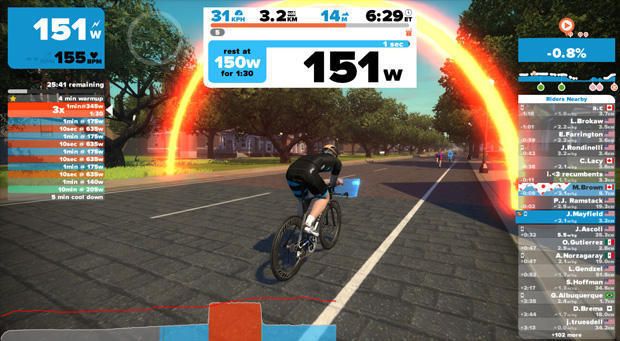
This could be executed on a treadmill with or without a motor. If you really wanted to virtual race you probably would need to restrict this to a footpod, otherwise some wiseacre could set the treadmill at 14mph and his treadmill is keeping up with the Kenyans while he's sitting on the couch watching Judge Judy.
For treadmill running I can't currently find anything better than VirtualRunner. Could and should we expand the options? Easy for me to say, but, with very little work what we could have is Zwift for running, with the “pack” consisting of those racing or those who simply want to walk or run with a common personalized effort, using either a footpod with real-time exportable data or a Wahoo GymConnect. Ditch the console in front of the treadmill, replace it with a big screen. Presto. Ecosystem.
Will the treadmill industry remain wedded to the idea that treadmill runners prefer to run alone? Would a treadmill company executive feel comfortable selling a closed system if his competitor just announced the part he plays in the community of device stakeholders in the new stationary running ecosystem? What if a treadmill company focused on making an excellent treadmill while inviting graphics and gaming folks, coders, and graphical display makers to bring their expertise to bear?


